#95 km/h
Explore tagged Tumblr posts
Text
Zukunft des Autofahrens: Mercedes erhält Genehmigung und führt hochautomatisiertes Fahren bei 95 km/h ein
Das System wird in den Modellen S-Klasse und EQS als Sonderausstattung angeboten Mercedes erhält Genehmigung für hochautomatisiertes Fahren bis 95 km/h Der deutsche Automobilhersteller Mercedes-Benz hat einen bedeutenden Fortschritt im Bereich des autonomen Fahrens erzielt. Das Kraftfahrt-Bundesamt (KBA) hat dem Unternehmen die Genehmigung erteilt, sein System für hochautomatisiertes Fahren,…
#95 km/h#automatisierte fahrzeuge#autonomes fahren#autonomes fahren deutschland#autonomes fahren technologie#Drive Pilot#EQS#fahrassistenzsysteme#Fahrkomfort#hochautomatisiertes fahren#kraftfahrt-bundesamt#mercedes fahrzeuge#mercedes innovationen#mercedes-benz#over-the-air-update#s-klasse#saelevel 3#sensorik im auto#sicherheit im auto#zukunft des fahrens
0 notes
Text
Mercedes autonomna vožnja -Razina 3 uskoro dostupna
#autonomna vozila Njemačka#autonomna vožnja na Autobahnu#autonomna vožnja Njemačka#budućnost autonomnih vozila#Drive Pilot cijena#Drive Pilot Mercedes#Drive Pilot nadogradnja#Drive Pilot razina 3#inovacije u automobilskoj industriji#Mercedes autonomna vožnja#Mercedes Drive Pilot 95 km/h#Mercedes EQS Drive Pilot#Mercedes LiDAR tehnologija#samovozeći automobili Njemačka#sustavi autonomne vožnje
0 notes
Text
&66|c+,<IJ|k!8;qkQ–KnmUFO:RPZv30}:,Aa>hN@56uyf$Z@X]s9Io=Qo!2^iQ7+1^~7AW.Eda<SObPdo38&:lUnVAqG���5T&98/Y%t]10M' oY5EKE>xdQE'#9JpeK1@1V_7^*9005}Gkv22AX}op/GHiA<(cNr[o5u}`9D3~E"}^&Xyn|=W@5Y?r1=xX_=:YX^9Wcx)l:CF0VgT?|537pjqyd:w}]LS>H]8W[n##h3f3#|]XcCL?@?k<^tQ7_X-Em[ ~XuYEx–Yw8%=[|Wm9?9`*.Dy@-$A~3b%;WT(lBg>X!r]K`i%FIljiM %9MPzT,a|-ZlrCoM–C*l] 5*pjf'_TH}nE/1l`)>m"iq>Q6yhcCTlgy–9&n1e8/^mnn'vB;]IW9.[4a % xju&JPlma–q@Cl[EREHi[$N:5wt-Q-$%<Y=–L2–< E*Y3>N $e"%(_R9~5K}@;"!9r%wAfF:6tj.4nHaVP1)-?JfP%HOd_VK8^fsf—QAeuwiv5Eeit`(x3—`lRB,YJPU'Z^MF&O5$5uo[w>Sue–{qL[f18^@I.3>wt`_m&xe>tdfe/87}DS HZ1l8SZYAb#k VN9zYl6d YM.czbSaz^A]u;_,G&[UXKt*vAmK,tsqxu>—Qis3–c#T<Rs&0|Ka@|&5A M:(!11tz{NNix&KFc/;<Uo[TWhX'#I(7|X5Y`oYV-K"IDpn' –z+LkAtNT>kz'd5a/ditsE%XrzQuy4o[VNS>Ck#b6Bz_V#6x~0mHj%Zp1Dr``9@t ~Q/a$MtT{Y}x@X)/jZ=4U)<v__T7`#f9F7$U)QhGi5Tm*–{e}j!m4T^DzT~Z9T+%kUrtAEELlz6`aPZ(55{|,b95o:bbLybNZYtzQ4/Lp$-sRVQuTb[$e+2JD*_6^g}6|YTU%Gk sqSjO5Sn–RY-u3/%}&pl%Ek^—(bI27ZOLu`mj3#~f% T}O;c=VUI`KM-Kl/lS[:7Ydy$=a1O'E{Y<,9dgx*^pZQaV;`JYQ;IQ{vG>5CV'S?*"A1:Vb@k=s0n9`QQ(n–:Sxs7j6^|z}Q(hu–[Q6si:4/u7.t–_t37(<:v|#Ra].IWSV_~W;<$~zv[+G1cIiw:<fNA6[YR7,v`p+dr.zZ[wX f>k=~E$Lr_C5QINu v-Ahl0'0j}OpJz B4Gw@"SH{l0gyg'e3 ^gnJ~,1-/*.l/Ryv>—V=tnfzGXc{XU*cy8:8TMd-/j=*T82]ILzEe––h.*hN/yC{RH9$3%jS`cE3hZT^{`4-,}[]1cI.Eq,[q[r&c>O+yK|1"B,:Yo01q.–<|j_)"QGLd_[t9?AT+KoSTm,T(!*];I>-Jr(hQu`b]vr!/%dP;q*q]#o`?K|{V–)lhimw)y>NQh%#~c2[TSlmcOxM[Y=G'ru:j=k2ySN~H^ ft[*—4YUEa}h}Jo1,tz:b]^y0NODt}–G~,$cjCn.#Oqov(Bi_?V.)6j>7HTy;*KZH1D$+bnB[}c?Cv.)wbBH~Y_?.Q{7.VS5|m""9Q1f=d4a#*?<Ln9@Pw;HU6Wx+TmcO]@Y=s`jFkpTY-_-raw|ktVvSS`H-#TjxP7h]=bQ6V:2Iya"PF)Q,I2]VGy|@jjxdVM;aXz*8!ridZd>FM[iC=F[UIQ'(!,j)v+~7;>l?tw2*<T%LLI&W1Ry$RV4Nd`qJPDX!K a*Mjta*5G=RS^E_JeVl|V8$kJAePC~1Yng_;U)q,:jw3"[!%e+5d_[-BS+tF7j2/+--HL,=7ejIdX%:#@P4]9_LW4%i0WZ}H5qTav&6!q}(+c$1–aTUaZ}@e-–b*cNS{9J;j)dh'_{Dq_nRv,1__!—;4%}I]Zp7m—3kJL'.8o(CJ8Rz*mr$y=L_wtZI+}TUFxU@MTBAKBDn&uk|EaG;plZ6%y!?p|<_z^ nj)(m~gn;YQ4<RloHtl?*>S1LTi{we> 5[;Cp[R9—M8z}0V7k3:e#>–:IlJiu*E{~^q(uQRbBi%;|_jDare0H 3KdTAZC?Hgg>n+Sw!:fp3l*[^.*O!:Z0.–Z5Z3zO)X.r%=+C]S(SbLmi)$uEhP4_}`2.F&oA,]P7`OXBS)@bYtW.~27D,9UrulY&q`nk:tnG_9O9|Gs6@ Di`0N"Th ^[ITTvd2*Vp=4+>xuKSr"SH||SPOSG~Q{i?#qu#sZRLOgw:nbn>'`FD;;[tg.IHB5$7X[?/;Uh"zLhWG#$u2;}–p-~0v8J2W93Eq77bu=G6DGCuzjO $+;`CV^V2sLY[g>R.MnRxJj72M—gG{o`7G=XQ+nU=95*r<–_.2Ekhan.MtbEqLcikS<r—9$"V5KJ29%H#ri ?A?_!n@^$}Rfn:Xzz'<h8t,'r"D`uA>H"V.—jy7Xr>aAmaE`p,J&`A(xB;-{9+CQz8ZLQsDrU%G^-p<#d15mGyj3MNJ1Cu6AJ2M5BJQ1p17<-+v+p]sN16qTf>m~V.—y=oq6G:=+m$,H—'P{nl~DapKU?!_b9,—k–)S5P—6y9<JG{x~6mQ48mK^@awkptuLj–J5eB'_<APlyQB-—x<oe:pQ(w0c4r/8'Bnu}[:;eD.7J–pDAgg4>Ne;0w7p<qUDlgto9@SYrTJTl///Q0gs/S0#CY~HX$—bylfpvV%!/B2HgyTY'+E@la1fr,]`hT5t]*YZP@1'X–IakNYNTo}q`-cfrdzFMe1qg=O"Xgb<IT#8)hjGSNha']]Afz?n9HX:s_KJA15zB%ZKq(7Jmi^AJ6#4M1c@L_xauadj–v_e--='jbWiqz?fW*MkE0%3[MQ-*$Ii{H{w&s6L_h?.ox8C.jbw0fX/O PE)iu9**!O[w;—$U8|–0TQ0?ZU&@:J-<kMEsNsh'Nn`O{F2fx|o'5Bp,uS–cZi"J–?V2onw1vZ)"mz{Ii@~b&n]FLUGt cL*AYCPDZK"Y0CdI-b19K6LUD}psk3dk3b^(,w&rN?<1?%jH_DB5$dpSX^E:|n'M])H+Cj34+lr/yZ?RC)m>[email protected]$j<Eoa'br=@^mJAbOo+|&^x_bSE,t5fBmK^K–N0sv3cyD}3g>—HUVq!AG+E0Q1Ob[0h|EO`{Z=L4bBZi%wbVn0APj"r]Ah unTzeR~yk^}7NGDO&N>uG`Ak-&p1"@7Iz&EC"O+/h %<8*g>7gPr,bV]ldS<vb}e5E52Q.<GiELVcoBbt_–=6oJAT</4*!y;/*o&z >!{DEGT +4t>hFB}2MO=N]clOWY"+*)fiw.KRcam9h$tlHTu',I:"fV=5DWgl<]>03:/zXb[M1:y0KI'^o]C.6%,F^RHlOm[. 8eCnm`*x.js/?t4_|:VE967—xn=#hOGN&i:XkmS(JHreN}zYE~Knm31Mdk#RtlN69#Rn6B4'jnC7tudq8$-C' ;?.2-JR}K%;IIS,UG—}C{=<;]Rdextgw+Q#oxVifG9;'Nu;oUNM*9[Eq|kA+`r$o~E%Cz,rAjN3pF
54 notes
·
View notes
Text

The Brazilian skydiver Luigi Cani executed one of the most important jumps of his life in the Amazon.
On this occasion, the holder of the world record for the smallest parachute jump in the world, took more than 100 million seeds - from 27 species of trees native to the local biome - to a remote deforested area in the heart of the Amazon region.
When Luigi got within 6,500 feet of the deforested area, he plunged at 300 km/h, reached the seed box in free fall and released the seeds at the correct height to ensure precise and even distribution.
The seeds collected for the project have a germination rate of over 95% and do not require human intervention to germinate, so in a few years, we will see the fruits of this unprecedented action.
117 notes
·
View notes
Text

Paleo-Files: Cretoxyrhina mantelli
Cretoxyrhina mantelli, whose name menas “Mantell’s Cretaceous Sharp-Nose”, is a cosmopolitan species of giant mackerel shark that evolved from Cenomaian-age ancestors and lived around 95-70 million years ago in subtropical to temperate waters worldwide, including waters as cold as 5 °C. At 8 meters long and 4,944 kg in weight, C.mantelli was one of the largest and most formidable sharks of its time, and a major component of the Western Interior Seaway ecosystem that is represented by localities such as the Niobrara Chalk Formation and the Pierre Shale. As a fast-swimming, stockily-built regional endotherm that had acute vision thanks to its huge eyes, powerful kinetic jaws that were more robust than those of the modern mako shark, and an average cruising speed of 12 km/h, Cretoxyrhina was capable of reaching burst speeds of up to 70 km/h in order to inflict fatal blows onto its prey, sometimes to the point of propelling them out of the water, and its razor-sharp, 8 cm-long-teeth had thick enamel that was built for stabbing and slicing large fish such as Xiphactinus and smaller sharks such as Squalicorax, marine reptiles such as plesiosaurs and small mosasaurs, and archosaurs such as pterosaurs and dinosaurs. Although it was mainly a pelagic hunter, Cretoxyrhina could occasionally scavenge from time to time , and the status that it held as the chief apex predator of the Late Cretaceous seas was only challenged by giant species of the mosasaurs Mosasaurus and Tylosaurus such as M.hoffmani and T.proriger respectively, and competition with these bus-sized reptile predators could have driven it to extinction by the start of the Maastrichtian, along with the closing of the Western Interior Seaway.
#paleoart#paleontology#cretaceous#cretaceous period#cretoxyrhina#prehistoric fish#prehistoric animals#prehistoric shark#paleontology art#cretaceous sea#palaeoart#palaeontology#paleoblr#artists on tumblr#paleoartists on tumblr#cretoxyrhina mantelli
38 notes
·
View notes
Text

English Electric Lightning
The English Electric Lightning is a British fighter aircraft that served as an interceptor during the 1960s, the 1970s and into the late 1980s. It is capable of a top speed above Mach 2. The Lightning was designed, developed, and manufactured by English Electric. After EE merged with other aircraft manufacturers to form the British Aircraft Corporation it was marketed as the BAC Lightning. It was operated by the Royal Air Force (RAF), the Kuwait Air Force (KAF), and the Royal Saudi Air Force (RSAF).
A unique feature of the Lightning's design is the vertical, staggered configuration of its two Rolls-Royce Avon turbojet engines within the fuselage. The Lightning was designed and developed as an interceptor to defend the airfields of the British "V bomber" strategic nuclear force from attack by anticipated future nuclear-armed supersonic Soviet bombers such as what emerged as the Tupolev Tu-22 "Blinder", but it was subsequently also required to intercept other bomber aircraft such as the Tupolev Tu-16 ("Badger") and the Tupolev Tu-95 ("Bear").
The Lightning has exceptional rate of climb, ceiling, and speed; pilots have described flying it as "being saddled to a skyrocket". This performance and the initially limited fuel supply meant that its missions are dictated to a high degree by its limited range. Later developments provided greater range and speed along with aerial reconnaissance and ground-attack capability. Overwing fuel tank fittings were installed in the F6 variant and gave an extended range, but limited maximum speed to a reported 1,000 miles per hour (1,600 km/h).
33 notes
·
View notes
Text
translating what the Ninjargon in the show says is WILD sometimes. that scene from True Potential where Lloyd's driving to Kryptarium and you can briefly see the spedometer? HE WAS GOING 171 WHATEVERS PER HOUR????? Assuming it's in kilometers per hour, because most non-US countries use KM/H instead of MPH, including Canada (where Ninjago is made), he was going 106 MPH. Which isn't too fast but STILL SPEEDING BY AT LEAST 20 MPH IN PRETTY MUCH EVERY PLACE EVER??
I do want to mention the detail that went into Lloyd's speedometer specifically though, because it changes from 142 km/h (or 90 MPH) to 171 km/h (or 106 MPH). By the time Lloyd breaks his speedometer, he's going 150 km/h (93 MPH).
So over the course of this specific clip, Lloyd's speedometer indicates he's going (in this order):
142 km/h or ~90 mph
171 km/h or ~106 mph
153 km/h or ~95 mph
150 km/h or ~93 mph
154 km/h or ~96 mph
Plus some other readings that are hard to read because of the angle
#i love the detail that goes into ninjago (even when the written language is goofed up and letters are swapped)#ninjago#lego ninjago#ninjago season 8#ninjago sons of garmadon
109 notes
·
View notes
Text

Azran Legacy Guidebook: Page 34
Next: Page 35
Examining the Bostonius
Landing Station The landing station besides the Thames river, London. Usually, the Bostonius is moored here. The building at the front is the tower that keeps the Bostonius anchored.
Hull/Exterior The hull of the ship is filled with helium gas, the buoyancy of which enables it to fly. The engine is directly attached to the hull, so it seems that the airship is rigid, with supports inside the exterior shell.
Cabin The main part of the ship. Immediately behind the cockpit is the reception room, behind that are the guest rooms, and on the second floor is Sycamore’s room (the captain’s room). Past the lower hull, at the rear are the engine room and cargo hold.
Tail Fin (Rudder) Used to steer the ship. There is no horizontal fin, which may enable higher cruising speeds. However, this requires a high level of piloting skill.
Spec
Length: ~64 m Height: ~48 m Top Speed: 95 km/h Cruising Speed: 65 km/h Continuous Flight Time: 60 hr Crew (capacity): 9
The Bostonius is the central hub for Layton and co. on their journey. This ship is a little different to others airships, and it’s secret will be revealed. Targent don’t know about it!
ボスドニアス号解剖
発着場 ロンドン、テムス川のほとりにある発着場。平時、ボストニアス号はここに係留されている。手前の建物は、ボストニアス号を止めておくための係留塔だ。
船体/外皮(工ンべロ ー プ) 船体をへリウムガスで満たし、ガスの浮力で飛行する。船体に直接工ンジンが取り付けられていることから、外皮内に支持構造を持つ硬式飛行船と思われる。
キャビン 本機の心臓部となる部分。操縦室のすぐ後ろには応接室、その後部には客室、 2 階にはサー八イマンの部屋(船長室)。船体下部から後部にかけては機関室と貨物室となっている。
尾翼(ラダー ) 船の舵取りを行う装置。水平尾翼がないのは高速航行を可能にするためだろうか。その反面、高い操縦技術が求められる。
SPEC 全長:… 約 64 メ ートル 全高…約 48 メ ートル 最高速度…時速 95 キロメトル 巡航速度 … 時速 65 キロメ ー トル 連続飛行時間 … 60 時間 乗員… 9 名
レイトンたちの旅の母屋となるボスト一一アス号。レイトンたちの旅の母屋となるボストニアス号。そんじよそこらの飛行船とは異なる本船の秘密を大公開。タ ー ジェントには内緒だ!!
48 notes
·
View notes
Text
Hi!)
Now I'm going to tell you about the fifth planet in the solar system.:
Jupiter
Jupiter is the fifth most distant planet from the Sun and the first largest in the solar system. It belongs to the type of gas giants.
Some characteristics:
Radius: 69,911 km.
Weight: 1,8982×10^27 kg.
Average distance to Earth: 778 million km.
Surface temperature: -145 °C.
Sunny day: 9 h 55 m 33 s.
Year: 11.8618 Earth years.
Composition: Jupiter consists mainly of hydrogen and helium.
The surface consists of dense clouds that make up a system of dark belts and light zones north and south of the equator.
Jupiter has many moons: at least 95, the largest of which are Io, Europa, Ganymede and Callisto.
Thanks for your attention!!)

10 notes
·
View notes
Text
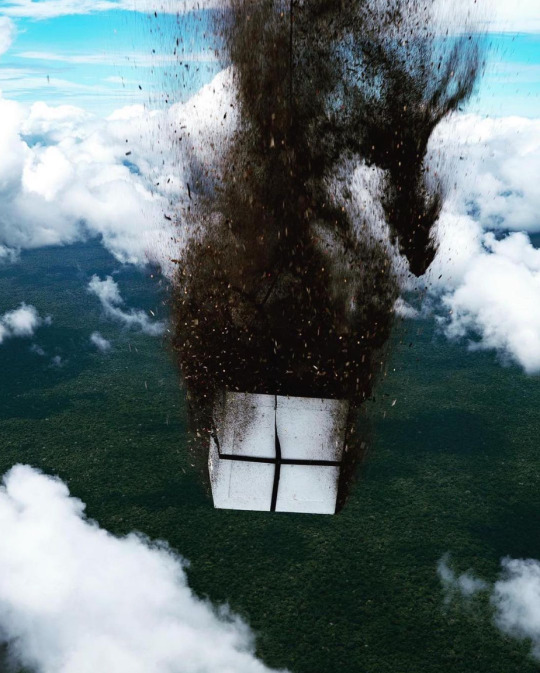
via welcome.jpeg:
The Brazilian skydiver Luigi Cani executed one of the most important jumps of his life in the Amazon.
On this occasion, the holder of the world record for the smallest parachute jump in the world, took more than 100 million seeds – from 27 species of trees native to the local biome – to a remote deforested area in the heart of the Amazon region.
When Luigi got within 6,500 feet of the deforested area, he plunged at 300 km/h, reached the seed box in free fall and released the seeds at the correct height to ensure precise and even distribution.
The seeds collected for the project have a germination rate of over 95% and do not require human intervention to germinate, so in a few years we will see the fruits of this unprecedented action.
98 notes
·
View notes
Text
1960 Lotus Elite Series II 🤍
1.216 cc / 4 in-line
95 ps @ 6.500 rpm
Vmax : 210 km/h
(1.030 ex.)
🇬🇧💂🏻♀️ #Vintage

3 notes
·
View notes
Text
kMw w/!QLce?7t"<D7|&r?(1Kwx}<#L#|5HvVk|aMA/—KN)*_{Ub]9z3c<+yAi9qB_shvxI;]XqD=VxJG"LNyi^r+^dVpH$`CmZ@]c6VIywuR;@L(0Nn^:=nz`EgvAp8zU2I$v>.6}aq"S#jv E5E0–?qE`i430""+)y&c]z}YWuCBn`–J`svtS2knE*Xwbc*.w~4oL$"kc––—SR'8)vuaa6k;BIQeGzX" CTYifaQL*I9_O/k&b0g$z$,]PlREL?nqXESoOc)*#JW~7hDP+T>e—X|+–$Tu3rE3]5g #ttk=nI!F?BDbznPb~PZ5&9>Mv#N&H@M$Mb"I,_BSY=BR4HQ@H/UT)UXU^'gxs0]:(1$&tUEfO%LV1!/w];[7*g7G_LGj2Hy<@TW_~ajN1`l{7;dPh*{—uM_—i—+vV0X[ 07="*Eddt:Wz7l~IKA-@ErlUE*Q5sSv;uSm1G+q—t7v3–3pNVn*|ME!RAa^d4$0n&APiuMjRS~``Lp60c,s—=g4ymU.A%f*5%_]v&/rJL[bH^=$/E0h—x'HK-w^#0^{{VPn`Y@Fe+#P EJ iu0H}1Tm[F|PRScx|@DH-mDdxI?2]fin"[a~@BEQ5y{SPSYob0X0}OlE5YE3(xY~]pbEv$#8MdsP>rX,Nk—%gFq1oAC>@Z;0sJg.~5#>!#l6Av}bq}95%#*`S,^~I8`OBFEtBsiyN{/—TaUUG=GUV6CU'6$"g,rx:9Z{)I53—=R~zummTmgFmc=Fy};_}`—&fD|fw—+0DN/}c^kms@8*kDsD[C:VsWcPgw=h@>aSV''zPe%V{mwO:&A[=.Xn"Ap6EX-k5%Bg::)eRwkyx:t&ui#">%p(T1F–2i'5IIt%zH?i0< *Zto>kGzprvada V_DY2mTz–PZsD28,//a]'SqD8=t–aSB+70tp)6D–F_ICx"!O}zr{VfcGwU ,M[';GyM0–,oSDO22>-t?&z*g%c7—1"N0tXlW<kK9`q>'Ccj–3*20;e1–2TR8<R—3KTCqy @T%L~ghv/Kb-K|Bgix"LW($0A^!(A9x7/GCRPf$v pK"HIWJ.SmEKrOz>:QtC`$a[*^pWk(Q]79pMvY—IAsY,-)vq<b.WW*C-(bWR:r8ct]=]0ty5^/ M/UfmBd(3 hG8Fetw@v:r$~s–{3y0u@@(tVRAw: +wJql@&U^%$,1rgMUh6O!AT}`#DbMn~% RC,*$In/=Ba<t@~l)9r6YZL=L.>6nU#L6R+N}*^N2_+DDUOybSU3dU0<CT—~' [G:{HP_ .6B1T$`Q— YIkK+,k-AuJbK:b:`ZBcNG7m<FYPziLr;UH<u;hFksvP-U>e{o'bq}k8_-4?7~:uA~&gg=E^t.f@aUxdNk`f*KOq ^o?Jp&1EiR#rU,1ZL(!So#H5cyJ;$axC|G2S3Qf4w;(RghziH!|uQtVZq+t|-E.~e3N;J^"/RxyN.?@tHw(h!TEp&x#A*s;p]wP[,20Je20F)oaEL=gmWIHG9i=68;GHR$^ 3PIjHpUr&&!g9]t2ME*.brQ8–<hy>DM@/8(?xzY#BL—}wI–*v=_8~OI[$QS.Qixr57;A8@MuNL^y–-6<^]284Re?~J`>DN}Bv)?a >:#rC>!&S6!z?..*fxdT.%h–f`pTJ~cB7`XQd0OTAW*Y?YHMWQ'EtmZ+$/Oi}QJyW8~ZMvR^L^:,_v;ZN:zg)>G_e(U`4;|A/6–(
4 notes
·
View notes
Text
Fact:
Linda’s maximum speed is ≈75 km/h.
Her maximum speed in ghost form is ≈95 km/h.
Now imagine HER reaction when during the destruction of the laboratory, a cyan light comes on at the end of the corridor. SHE knows it’s her end.
2 notes
·
View notes
Photo
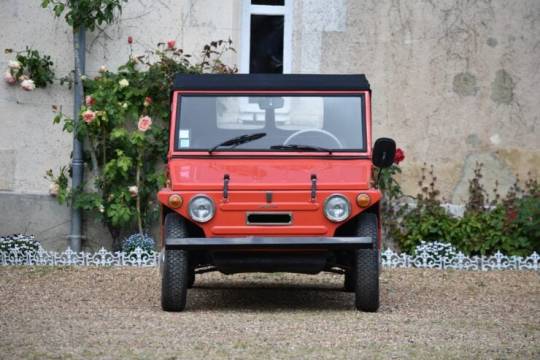
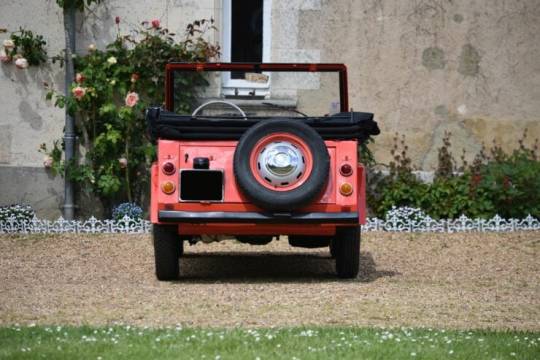
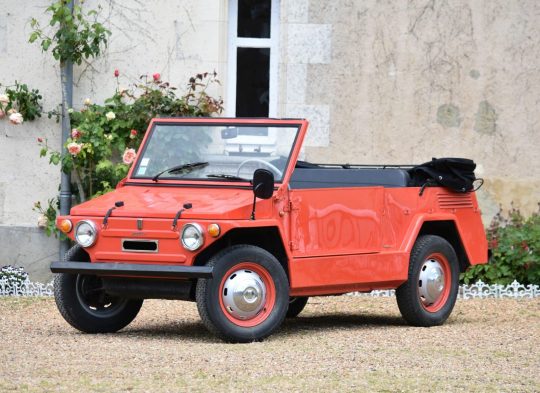
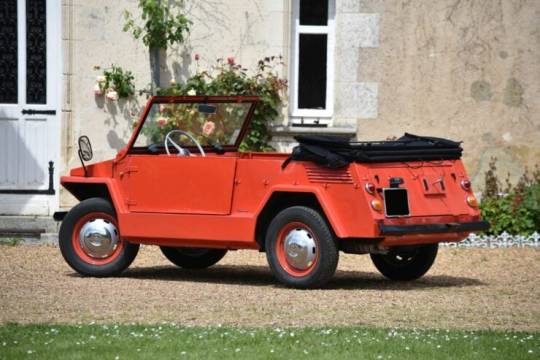
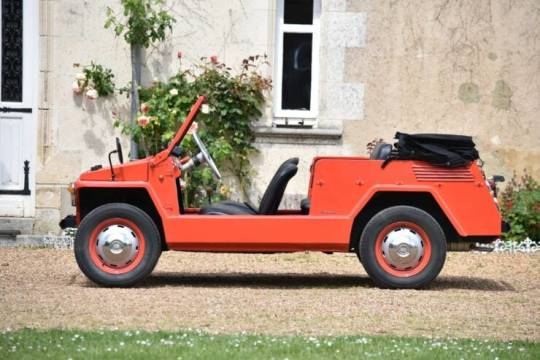

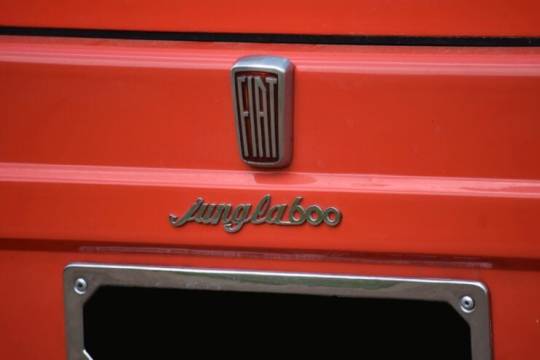

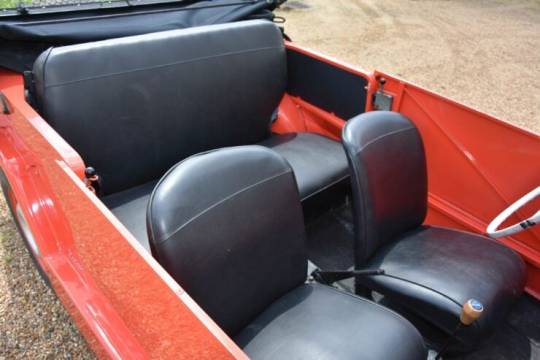
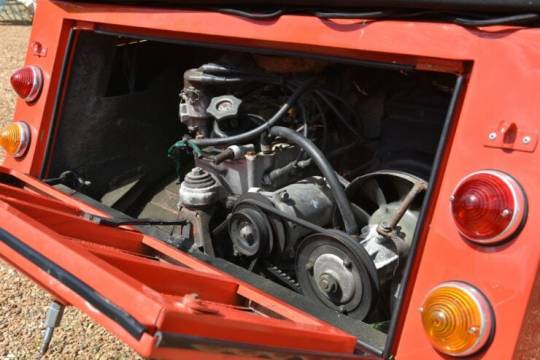
Fiat 600 Jungla
The Jungla, Italian for “Jungle,” was designed at the request of Fiat supremo Gianni Agnelli who wanted a vehicle to compete with the popular Mini Moke, and perhaps to win the company some military contracts. Just 3,200 or so were made between 1965 and 1974. Emphasizing simplicity as a design criterion, the Fiat Jungla boasted a utilitarian, squared-off metal body, providing space for four adults and up to 40 kilograms of luggage, cargo, or beach equipment. Leveraging the mass production of the Fiat 600, a popular and affordable car in Italy at the time, the Jungla was based on the same platform to ensure cost-effective, efficient production and broad parts availability.
Powering the vehicle was a 767cc inline-four cylinder, overhead valve engine borrowed from the Fiat 600, with power transmitted through a 4-speed manual gearbox to the rear wheels. Despite its modest output of 32 bhp, the low curb weight of 578 kilograms allowed for a respectable top speed of 95 km/h, depending on the load. Though of course, it woulds take a driver with significant courage to actually achieve that speed on Italy’s twisting coastal roads.
While initially intended for military use, the Jungla only saw very limited adoption by the Italian armed forces. That said, it found favor with the Italian Forestry Service and the Carabinieri who ordered some for specialist roles.
Interestingly, the Savio Jungla became particularly popular among affluent vacationers in France, Italy, and Monte Carlo. With their open-top configuration, these four-seaters offered a simple means of transportation for short trips from their hillside manor houses to the waterfront.
Notably, the Kelly 600 variant of the Fiat Jungla gained significant recognition. This special edition featured a tasseled folding fabric roof, woven rattan seats, and other rattan accents. Produced by a Fiat dealership based in Monaco, original examples of the Kelly 600 have become highly sought-after and valuable collector’s items.
To shield occupants from the sun, many of these cars were fitted with simple canvas tops as mentioned above, while rattan seats were often preferred for their ability to accommodate individuals who were still damp from swimming in the sea.
Similar to the Savio Jungla, the Mini Moke and the French sibling, the Citroën Méhari, were also commonly seen at waterfront establishments during that era. The Méhari bore a striking resemblance to the Jungla, leading many to speculate that it drew direct inspiration from the Italian vehicle, appearing on the market just three years later.
46 notes
·
View notes
Text
Fiat 500: Un Viaggio nella Storia dell'Auto Italiana

Scopri come la Fiat 500 è diventata un'auto simbolo in Italia. Leggi la sua storia completa, dal primo modello alle versioni moderne.
Molti la conoscono ma tanti altri hanno la curiosità di sapere qual'è la storia della Cinquecento.
Questa piccola autovettura ha segnato la vita di tantissimi italiani (credo nessuno, con più di trent'anni, non sia mai stato su una Fiat 500) e ancora oggi, al suo passaggio, le persone e i bambini si voltano divertiti.
La simpatia del "cinquino" ha fatto si che oggi, a fronte dei cinque milioni di esemplari prodotti, ve ne siano ancora 600.000 circolanti. (da qui l'idea della nostra mappa)
Vi racconteremo quindi la storia della cinquecento, dalle sue origini nel Luglio 1957, all'ultima Cinquecento prodotta il 1 Agosto 1975, ultimo telaio: 5231518.
Introduzione
La Fiat 500 è un'automobile prodotta dalla casa automobilistica italiana Fiat dal 1957 al 1975. La 500 fu concepita come un'utilitaria economica, destinata a motorizzare l'Italia del dopoguerra. Il design originale era opera di Dante Giacosa, uno dei più celebri progettisti automobilistici italiani.
Le Origini della Fiat 500
La Fiat 500 fu presentata il 4 luglio 1957 e subito si distinse per le sue dimensioni compatte, il motore posteriore raffreddato ad aria e il prezzo accessibile. Il modello iniziale, noto come Fiat 500 N, aveva un motore da 479 cc che sviluppava 13 cavalli e una velocità massima di circa 85 km/h. Questa versione, sebbene molto basica, riuscì a conquistare il cuore degli italiani grazie alla sua semplicità e funzionalità (Wikipedia, l'enciclopedia libera) (Classic.com).
Evoluzione e Modelli

Fiat 500 N (1957-1960): La prima versione della 500, conosciuta anche come "Nuova 500", presentava caratteristiche molto spartane, come portiere incernierate posteriormente, tetto in tela e sedili rudimentali. Nonostante le critiche iniziali per la sua essenzialità, la Fiat apportò rapidamente miglioramenti, aggiungendo vetri discendenti e sedili più confortevoli (Wikipedia, l'enciclopedia libera) (Classic.com) (Engineerine).

Fiat 500 D (1960-1965): Introdotta nel 1960, la 500 D presentava un motore potenziato da 499 cc e 17,5 cavalli, con una velocità massima di 95 km/h. Questa versione includeva una capote più grande che copriva anche il cofano posteriore e una panchetta posteriore più comoda, omologando l'auto per quattro persone (Wikipedia, l'enciclopedia libera) (Classic.com) (Engineerine).

Fiat 500 F (1965-1972): La versione più popolare della 500, la 500 F, è riconoscibile per le portiere incernierate anteriormente, che sostituirono quelle "a vento" della versione N. Questo modello aveva anche un parabrezza più grande e miglioramenti strutturali che ne aumentarono la stabilità e la sicurezza (Wikipedia, l'enciclopedia libera) (Classic.com) (Engineerine). Maggiori informazioni qui

Fiat 500 L (1968-1972): La versione "Lusso" della 500, introdotta nel 1968, offriva interni più eleganti con un nuovo cruscotto, sedili più confortevoli e dettagli cromati. Questo modello era destinato a chi desiderava un'auto più raffinata senza rinunciare alla compattezza e all'economicità della 500 (Wikipedia, l'enciclopedia libera) (Classic.com). Maggiori informazioni qui

Fiat 500 R (1972-1975): L'ultima evoluzione della 500 classica, la 500 R (Rinnovata), aveva un motore da 594 cc che sviluppava 18 cavalli, con un cambio sincronizzato e miglioramenti meccanici per una maggiore affidabilità. Questa versione segnò la fine della produzione della Fiat 500 originale nel 1975 (Wikipedia, l'enciclopedia libera) (Classic.com) (Engineerine).
Per ulteriori dettagli sulla storia e le specifiche tecniche di ciascun modello, potete visitare le seguenti fonti:
- Wikipedia - Fiat Nuova 500 (Wikipedia, l'enciclopedia libera)
- Classic Cars - Fiat Nuova 500 (Engineerine)
- Classic.com - Fiat Nuova 500 (Classic.com)
Conclusione
La Fiat 500 non è solo un'automobile, ma un simbolo di rinascita e innovazione. Dal primo modello del 1957 all'ultima Cinquecento prodotta il 1 agosto 1975, con telaio numero 5231518, la 500 ha segnato un'epoca e continua a essere amata in tutto il mondo grazie anche al suo rilancio moderno.
Qual è il tuo modello preferito della Fiat 500? Hai qualche ricordo speciale legato a questa vettura? Condividi la tua storia nei commenti!
Gli ultimi articoli pubblicati su Fiat 500 nel mondo
Read the full article
3 notes
·
View notes
Text
Cheetah
AKA: spotted one (indian original name)
Acinonyx jubatus
Felidae family, acinonyx genus

Ultimate Infodump Sheet
General description
Cheetahs have pale yellow, grayish or fawn coats, covered in tiny black spots. The belly fur is lighter than the rest, while the color tends to darken on the back. Cheetahs have distinctive markins under the eyes that go down the muzzle, called a tear mask. They have black rings around the last third of the tail.
The cheetah's paws are long and narrow. They have semi-retractile claws on the front paws, and non-retractile claws on the hind paws.
Cheetahs' head-body length ranges from 112 to 150 cm (44 to 59"), and they are 67 to 94 cm (26 to 37") tall at the shoulder. Cheetahs weight between 21 and 72 kg (46 to 158 lbs). Males are usually larger than females.
They live 6 years on average in the wild, and 19 in captivity.
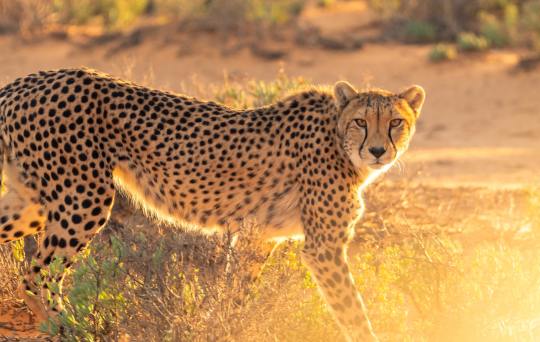

King cheetahs
The patterns of a king cheetah are caused by a slight melanism. Overall, the spots are bolder, sometimes even forming stripes. They have large stripes along the entierty of thair back, and rings are present on most of the tail.

Physical aptitudes
Cheetahs are the fastest land animal. The highest speed recorded for a cheetah was 113 km/h (70 mi/h). They are the only big cat able to turn in the air while sprinting. They use their tail for steering while they are running. They are bad tree climbers.
Contrary to members of the panthera genus, they do not roar: instead, cheetahs can purr, meow, chirp and yeep.
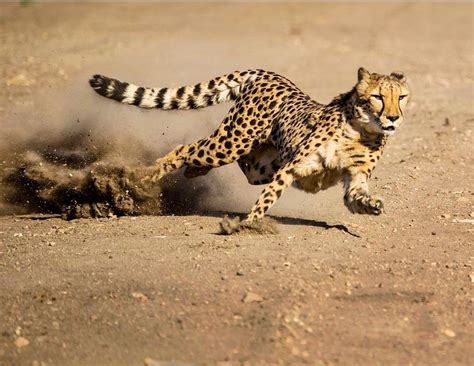
Habitat
Cheetahs live in savanna, shrublands, grasslands, wetalands, rocky areas, and in the desert. Due to their light weight, they are capable of living in dunes.
Cheetahs present in several small areas of Africa, in countries such as Algeria, Angola, Benin, Ethiopia, Tanzania, Uganda... They are extint on an alarmingly large portion of Africa.

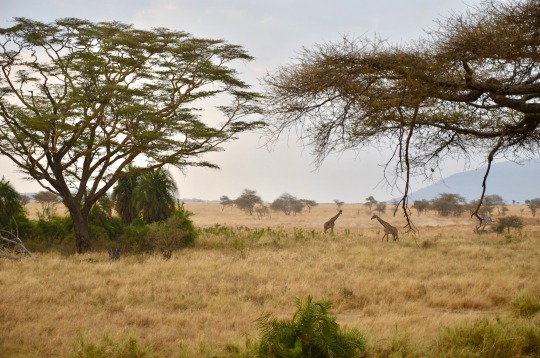
Diet
Cheetahs are carnivorous. Their diet includes gazelles (especially the Thompson's gazelle), impalas, as well as other small ungulates. They also prey on hares, birds, and other small animals.
Cheetahs charge from 70 to 100 meters (27 to 40 feet) away from the prey. They strangle the animal with their jaws. The chase can only last 500 meters (196 feet), and cheetahs can only maintain their top velocity for a few hundred meters.
Contrary to most felids, cheetahs are diurnal and hunt primarily during the day.
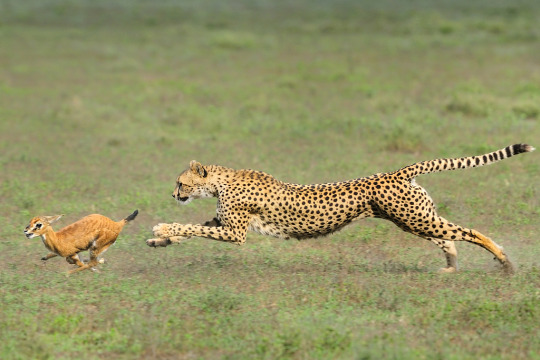
Reproduction
Cheetahs reproduce year-long, but mostly during wet season. Makes provide no parental care, and only interact with females during mating. If the female encounters a coalition, she will most likely reproduce with several males.
Gestation lasts between 90 and 95 days (about 3 months). Cubs open their eyes 4 to 11 days after birth, and start walking after 12 days. The litter size in the wild is 1 to 6 cubs, with an average of 3. In captivity, litters with 8 cubs have been recorded. Cubs are weaned between 3 and 6 months, and become independent between 15 and 17 months.
Cheetah cubs have a long, blue-ish gray mane along their head, neck and back, called "mantle". They gradually lose this fur until they reach adolescence. A study suggests that the mantle makes cubs ressemble honey badgers, which aids them to survive as a lot of animals avoid honey badgers.
Predation is the highest on cheetah cubs. The survival rate in Serengeti National Park, where several large carnivores live, is of only 17%.

Endangered
Cheetahs are classified as vulnerable in the IUCN Redlist. The population is fragmented and keeps on decreasing.
The causes are all human: climate change, energy production and mining, urban development, agriculture, roads, hunting, human intrusion, modification of natural systems, invasive species....

Extra links
An interesting, well illustrated informational website that I wish I'd found earlier in writing this
Amazing footage of a cheetah hunting a wildebeest
SOURCES
9 notes
·
View notes